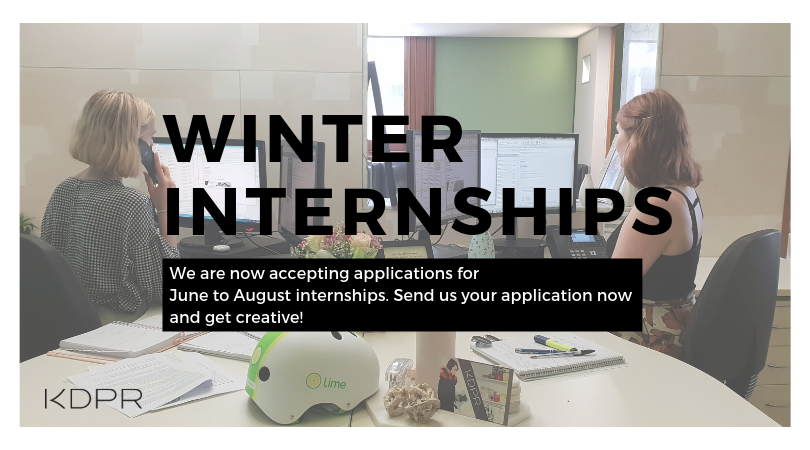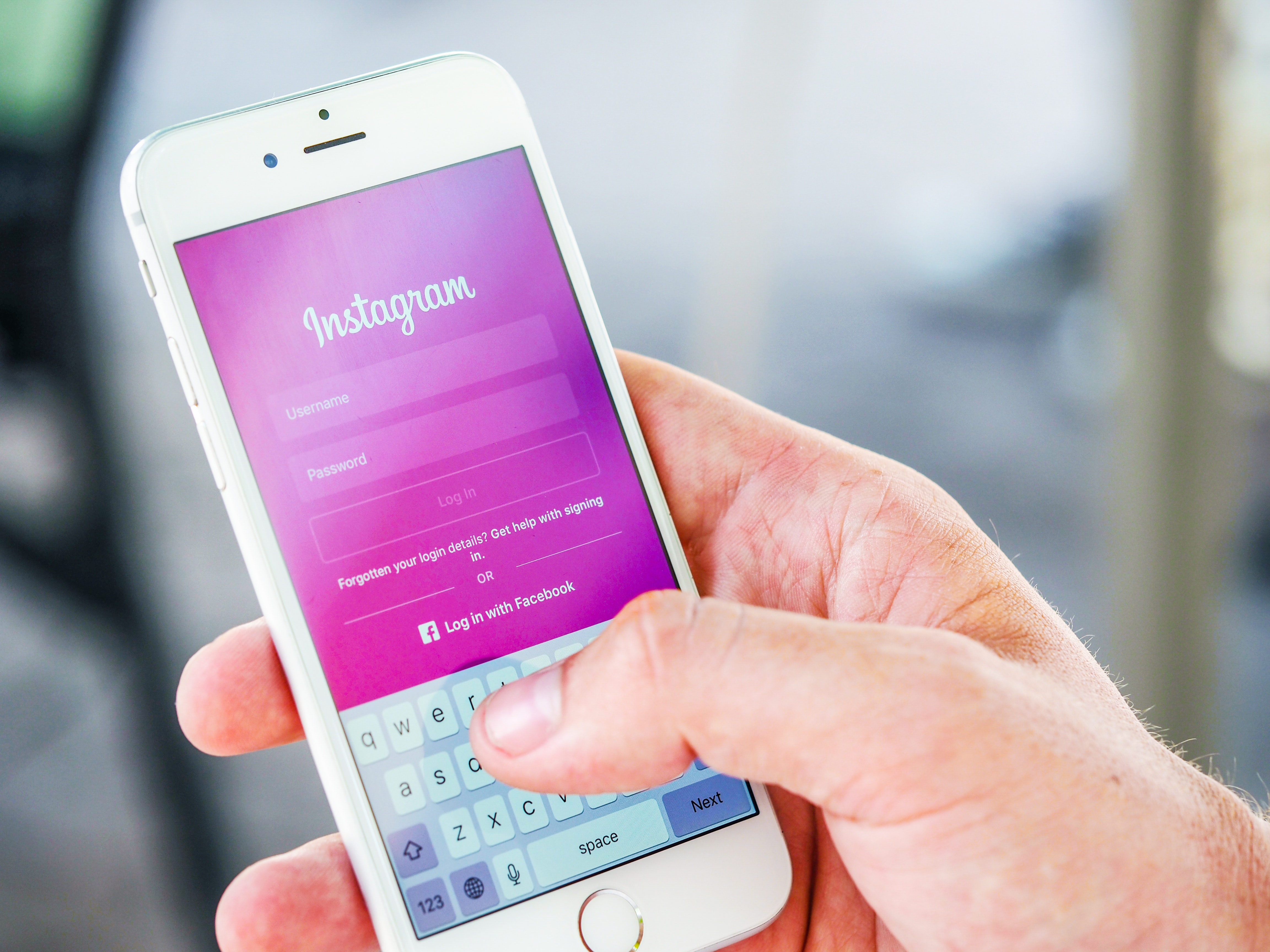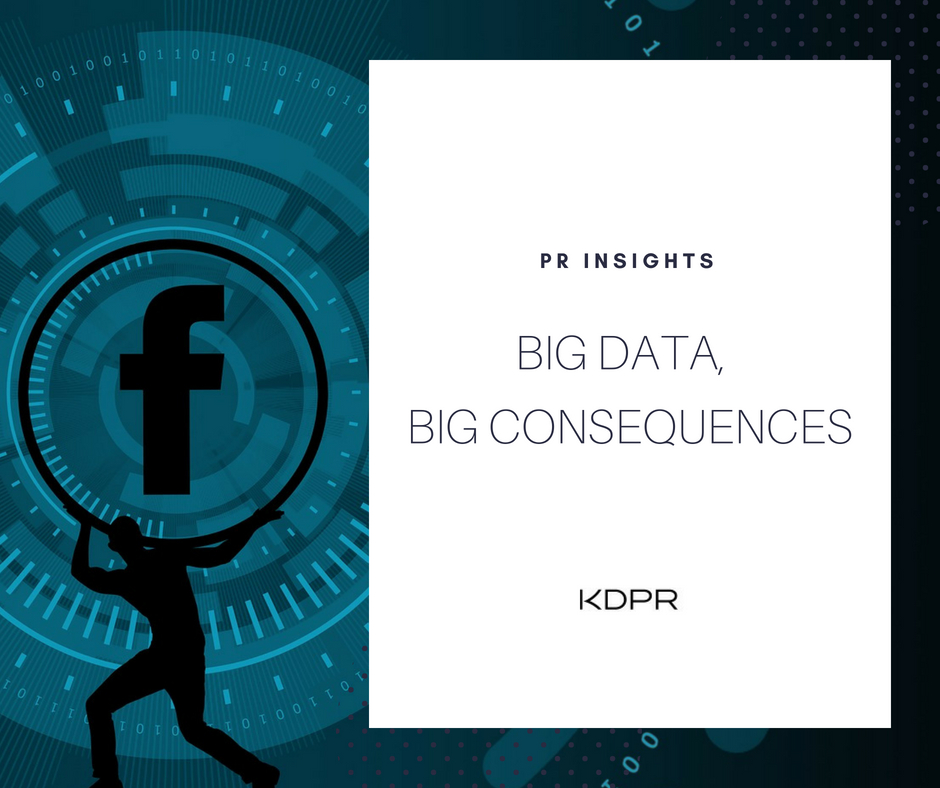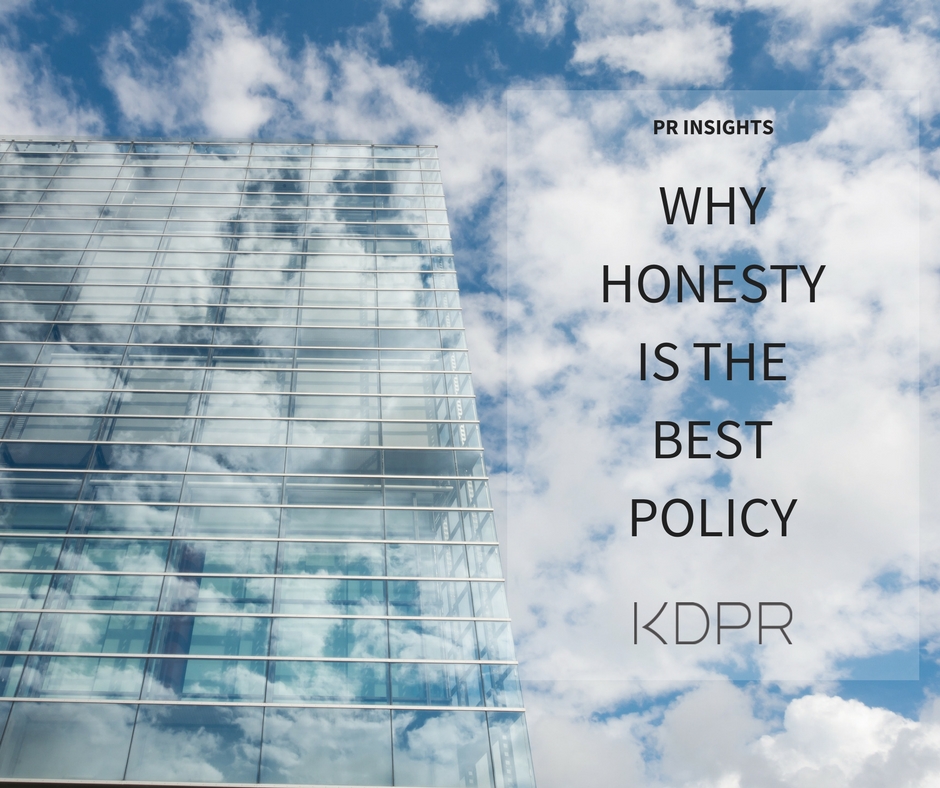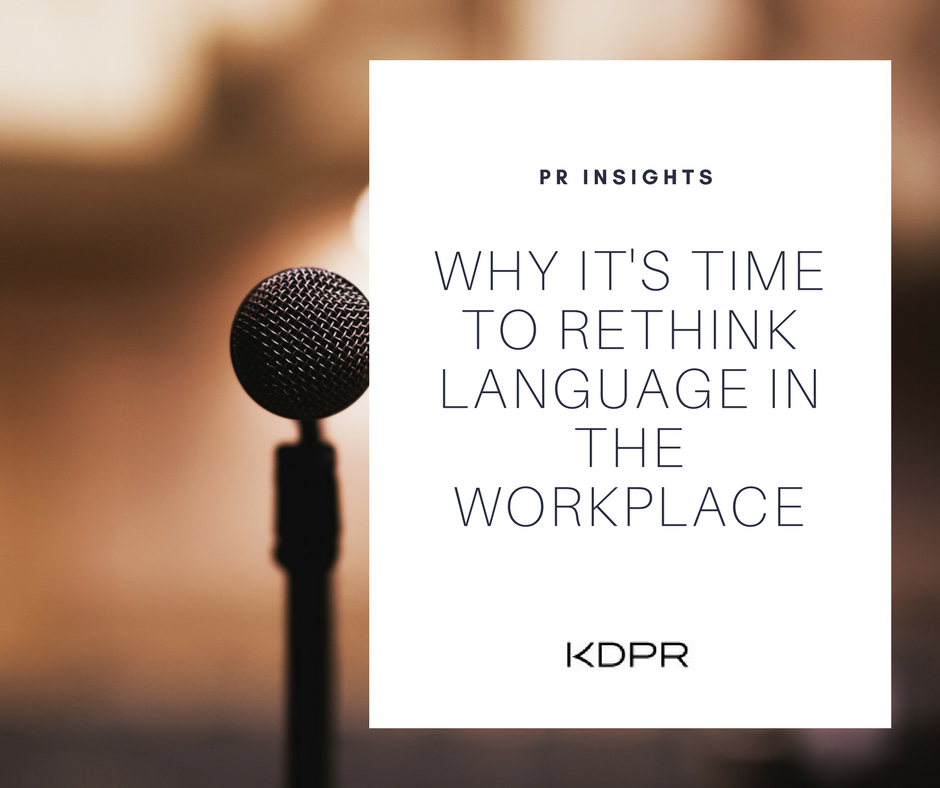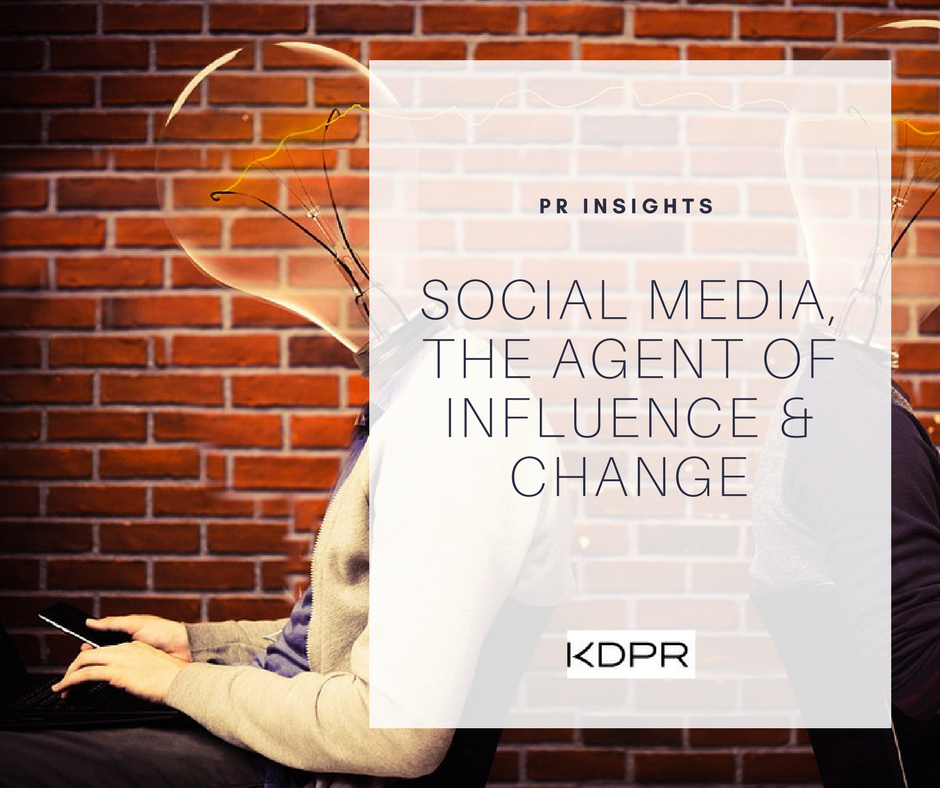-
#stormourshelters: How animal shelters are capitalising on the internet’s favourite viral meme
Over the last few weeks, a Facebook post encouraging people to storm Area 51 has had more than 1.8 million people sign up and strategise on the best way to “see them aliens”, resulting in a plethora of memes and a rather stern response from the US military.

Image: @brandyn_wth_a_y (Twitter).
However, the best response to #stormarea51 has been the animal shelters jumping onto the trend to drive more awareness of the pets they have up for adoption.
Dressing up their puppies in tinfoil hats OKC Animal Welfare in Oklahoma started the trend and will be hosting a Storm the Shelter event on Saturday 27 July.

Image: OKC Animal Welfare.
So far the photos have been shared over 8,400 times on Facebook, as well crossed over to Instagram, Twitter and Reddit, and the shelter has reported adoption rates have been through the roof this week.
Longview Animal Care and Adoption Center in Texas has followed suit, making out-of-this-world alien costumes for their cats, dogs and even lizards.
Longview’s Facebook post says, “We won’t resist; you can take them all!”
“Our aliens can go home with you for the best price in the galaxy. No probing allowed.”

Image: Longview Animal Care and Adoption Center.
Meanwhile back in Aus, the Area 51 meme has taken yet another life of its own with more than 20,000 people interested in Storming Bindi Irwin’s wedding.
“She can’t say no to all of us,” the anonymous poster titled the event. CRIKEY!
If you need help managing your social media, the KDPR team assist you with:
- Publicity and media relations
- Social media training
- Development of social media content plans
- Photography for socials
- Advice on how to get your business trending
Get in touch with our experienced team today and take your socials to infinity and beyond!

Image: thetab.com.
-
Instragram is now hiding ‘like’ counts… What does this mean for your business?
Instagram users in Australia will now be unable to see the number of ‘likes’ a post receives, as the social media giant trials changes to take the “competition” out of posting. Starting today, this trial update will remove the total number of likes on photos and viewings of videos on Australian user feeds and profiles, and permalink pages. If you’re sitting there freaking out about what this will mean for you and your business who utilise and rely on social media, never fear!
Here’s what you and your business need to know:
- HOLD UP…your likes and engagement metrics will NOT be affected
This change won’t affect measurement tools for businesses and creators on Instagram, and all likes and engagement metrics will still be available in those tools.
- You can still see your own likes
Users will still be able to see the number of likes received on their own posts, but not others. If you would like to see who exactly has liked someone else’s post, you can click through to the list of users who liked the post, you just can’t see the specific number.
- RELAX…this is a positive change
While you may have been stressed and confused when you woke up to this news this morning, this trial feature is designed to “remove the pressure” and take the “competition” out of posting. Instagram is giving you and your business the freedom to express yourself and be creative without fear of falling short in the number of likes.
- FOCUS ON AUTHENTICITY
The economy of likes has increasingly lost its meaning. These days anyone can call themselves an influencer based on the number of tiny little red hearts they receive on a post. There is more to Instagram, and life than likes. This is a timely reminder that social media should be used as a way to genuinely connect with your community and stakeholders. Focus on delivering quality content for your followers that demonstrates your passion and creativity, rather than trying to produce content that will be ‘popular.’
If you would like to take your business social media platforms to the next level and learn how to successfully engage with your audience, get in touch with us today to find out more about our social media training sessions. Let us plan and implement a strategic communications plan for your businesses’ social media and give your brand a voice.
KDPR is a respected PR communications agency with a reputation built on consistent innovation, effective strategy, clear communication and lasting results. KDPR offer clients a helping hand in the ever-changing world of media and social media.
Please contact KDPR’s Director, Kristin Devitt for more information on what we can offer you via phone on 3136 2555 or email her at .
-
Five reasons students need internships
A common concern of students nearing graduation is uncertainty around their employability and the best way to overcome this uncertainty is to prepare for professional life through interning.
Here are five reasons why doing an internship is an essential part of your personal and career growth:
- Gain experience you can’t get inside of a classroom
There is only so much you can learn in a classroom. Interning is the perfect opportunity for you to put the theoretical knowledge you have learnt into practice.
- Internships give you a taste of the real-world
This is your opportunity to learn valuable skills about the workplace in general. Being a part of a team teaches you to work through challenging situations with the guidance of professionals.
- You can earn yourself a professional reference
Having the opportunity to learn from an industry professional will allow you to find yourself a mentor or someone you could turn to for professional advice. Your team leader or supervisor could also be your future employer’s best point of reference.
- Build your professional network
Internships are a platform to develop your professional brand. The people you meet in your internship may be people you work with in the future. This is your chance to meet like-minded people and establish a professional network.
- Gain confidence
Interning allows you to be more agile and receptive towards other people’s ideas while being professionally assertive with your own opinions. Through your internship, you will expand your perspective and overcome challenges. These experiences will allow you to be more confident moving into the professional world.
If you are still deciding on whether you should take on an internship, the answer should be a resounding YES! Get yourself job-ready and start your internship journey. Get in touch with our team for more information on our internship program.
-
The Nine and Fairfax Merger – the fallout for PR professionals
It was the news that shocked the Australian media community—the announcement that Nine and Fairfax are merging together to create a joint venture, becoming Australia’s largest media powerhouse, known as Nine.
In order to wrap our heads around the merger, we’ve dived into what this means, how it will impact on media consumers, and what it means for the Australian media landscape, PR professionals and their clients, moving forward.
The merger will see Nine Entertainment Co. and Fairfax Media Limited combining television, online video streaming, print, digital news, radio ventures and real-estate advertising under one roof.
Nine will be the dominant shareholder with 51.1% and the board will consist of six directors, with three from each media organisation. The combined business will be headed by Nine Chief Executive Officer Hugh Marks, and the new board will be chaired by Nine Chairman Peter Costello.
What the merger means for Nine and Fairfax
Although it has been called a ‘merger’, Nine holds a larger share and has acquired Fairfax and its portfolio of newspapers, radio, real-estate business Domain and its share of online streaming service, Stan.
The merger has been criticised by the industry as a Nine takeover and questions have been raised about ongoing editorial direction.
Stan, created in 2014 and launched in 2015, was originally owned as a 50/50 venture between Nine and Fairfax investing $50 million each into the Australian streaming service. Under the new Nine, Stan and its content will be 100% owned and facilitated by the company.
This may strongly impact what content Stan will produce in the coming years and how Nine will implement their current programs through the streaming service.
Domain will also pay a massive role in the merger, with plans to connect the online real-estate platform with one of Nine’s leading programs, The Block. This will also lead to more targeted advertising, moving from the online digital new sites into television and with more advertising comes more money.
The repercussions of the merger
With company mergers in the current media landscape, there is always the consideration of job loss.
With Nine taking ownership of Fairfax, the employees would all be wondering where they fit into this new venture and whether their job still exists.
Nine and Fairfax have said the merger would deliver an annual saving of at least $50 million over the next two years.
The $50 million question is whether some of the money is made up of Fairfax journalists’ wages.
The legacy of Fairfax
In the announcement of the merger, there was talk of the legacy of Fairfax and the role they have played in Australian media over the last 180 years.
Fairfax is the mother company to many of Australia’s newspapers and online news sites including The Sydney Morning Herald, The Age, The Australian Financial Review, Brisbane Times, and The Canberra Times.
Will these newsrooms merge working spaces with the local Nine television studio offices? Will the content displayed across all former Fairfax newspapers and sites be the same content we see every night on Nine television? Is there so much talk of Fairfax’s legacy because Australian journalism as we know it will be changed forever?
There are just so many questions that remain unanswered.
Commentary to Date
The announcement has garnered a lot of commentary to date.
“The old rivers of gold that used to be the print publications are now the digital rivers of gold.” – Nine CEO Hugh Marks
“The ability to leverage the great audiences that we have and the marketing inventory that we have, to grow Stan, to grow Domain, as we have done within a publishing context but to broaden that out into TV is something that everyone will benefit from.” – CEO Fairfax Media
“To be fair, Nine has invested heavily in news in recent years—including regional news—and its reputation is generally good.” – Paul Barry, Media Watch
“But I’d just say, though, that the ability of two businesses like that to be able to consolidate will put them in a stronger position to compete and, I think, in a stronger position to support quality journalism, whether it is in print or online or on TV.” – Prime Minister Malcolm Turnbull
“Our changes to media law are giving the opportunity for Australian media organisations to look at how they can make themselves the strongest they can be.” – Liberal Senator Mitch Fifield
“It’s a brutal end for Fairfax – but media is changing, and we can change it for the good.” – Guardian Australia’s Editor Lenore Taylor
“The merger of Australia’s second biggest free-to-air TV network with the second biggest newspaper publisher will result in a $4 billion-company that is second only to News Corp in size and impact.
That will put pressure on its media rivals, particularly the other commercial free-to-air networks, Seven and Ten.” – ABC Senior Reporter Anne Barker
What does this mean for PR professionals and their clients?
The media landscape is constantly evolving, diversifying, and refining its offer in a bid to attract and keep paying customers. PR professionals constantly monitor media movements and follow journalists as they move around news rounds and fulfil more general reporting duties. The changes will keep the PR industry on their toes navigating the new gatekeepers to editorial delivery.
PR professionals will be monitoring what happens to the 160 regional newspapers where Nine has no presence or interest—will they survive the merger? Will regional communities be cut out of the media landscape?
Concerns about media homogenisation are also valid in a landscape with little diversification of voice. Will Fairfax start to sound like Nine? Will media stories picked up by editorial teams be limited by whether or not they align synergistically with the Nine brand?
What is the future of investigative collaborations, such as the one between Fairfax and the ABC, which resulted in the Royal Banking Commission? Will the Fourth Estate be able to fulfil its duty and hold government and the private sector accountable for the betterment of society when the Fourth Estate appears to be shrinking? Only time will tell.
It is hard to know what the future holds for this new venture but Australia’s media and PR world will be watching closely to see what happens next.
Words by Hannah Palmer
-
IGTV – a new channel offering a fresh way to tell your story
A new channel of opportunity has entered the marketing sphere with the launch of IGTV. Brands, personalities, marketers, and corporations now have a new method of telling their story and reaching their audience with the new video sharing channel on Instagram.
Instagram, the photo and video sharing social networking platform, has released their new TV function (IGTV), making Instagram a strong competitor against platforms such as YouTube.
What sets IGTV apart from YouTube and traditional television is the formatting of the videos; full-screen and portrait, suited to specifically fit the shape of mobile devices and revolutionising video viewership.
While this orientation is not new to Instagram (Instagram stories have allowed snippets of portrait videos), videos are no longer limited to one minute and instead can be up to an hour long. This gives media outlets the option to produce longer content on the app for viewers.
Instagram, though, is not alone in its adoption of portrait formatting with the introduction of Snapchat Discovery in 2015, where user-generated content was easily uploadable, accessible and sharable.
Instagram began as a platform to share photos and extended to video, live video, direct messaging and stories, modifying to suit the shifting social media paradigm. With YouTube gaining more than one billion daily views, Instagram has addressed the larger engagement rate of videos by producing a platform to directly compete with YouTube.
What IGTV means for creators
As Instagram has recently reached one billion monthly actives, the introduction of IGTV will allow content creators already with large fan-bases to share more with their followers with the TV function accessible in a stand-alone app as well as within the Instagram app.
IGTV allows easy user access to different content creator’s channels as video from followed channels starts playing as soon as the app is opened. With ‘For You’, ‘Following’, ‘Popular’, and ‘Continue Watching’ pages, smaller creators, or channels, can reach broader audiences as their content is recommended to users who are most likely to enjoy it.
Instagram has recruited big online influencers such as Lele Pons and LaurDIY to promote the new platform with uploads of casual vlogs, leading the way in expressing the sort of relaxed content Instagram wishes its platform to share.
Video Style
By limiting videos to the portrait orientation, the app is suited towards phone-filmed footage, encouraging more raw content.
The production quality of videos uploaded to IGTV does not have to be as heavily edited or polished as a TV show or film, but rather it will have a focus on entertaining audiences with limitless options of videos ranging from vlogs (video blogs) to event footage.
Advertising & IGTV
Currently IGTV isn’t monetised and the platform isn’t being used for advertisements or as payment for content creators. Videos will have link-out options, allowing content creators to send traffic to other social networking websites, extending their Instagram audience to other platforms.
With each video not needing to be entirely serious, businesses can attach links to their own websites, creating interesting content for users while promoting visitation of their external sites.
Videos, once too long for Instagram, can now be reposted to a new audience. Promotion of products and events can now be marketed through longer-form video on Instagram, reaching an already accumulated following as well as other users, who are most suited to the product or event, through the recommendation of videos.
With a large population of influencers on the platform, businesses are encouraged to arrange brand deals with popular influencers to increase visibility of products as well as increase production creativity in their own content.
IGTV provides a personalised feed, within the viewer’s phone, creating a platform with opportunities for marketing through entertainment. It’s a fresh way to tell brand stories and we at KDPR can’t wait to start creating IGTV for brands wanting to elevate their messaging.
Words by Ciara Morgan
-
Big Data, Big Consequences
Facebook’s latest data breach has far-reaching consequences for businesses and public relations practitioners.
In 2013, a Facebook app called This Is Your Digital Life paid users to complete a quiz which was used to create psychological profiles. Roughly 87 million personal data profiles were obtained when friends of these users had their data harvested – without their express permission. If you want to check whether your data was accessed during the breach, check out Facebook’s tool.
Around a year later data from the quiz users and their friends was sold to Cambridge Analytica, a political consultancy firm, and used to create targeted, political advertising for the Brexit and Ted Cruz’s 2015, and Donald Trump’s 2016 presidential campaigns. This isn’t just a breach of privacy – this is mass manipulation.
Investigations surrounding the breach were incredibly serious, and Facebook’s CEO Mark Zuckerberg testified before members of congress in April.
Public Relations practitioners aren’t generally considered data-scraping wizards, so you might be wondering why Facebook’s latest data breach has anything to do with PR.
Let’s begin with this: We all know understanding your audience is key for executing successful, engaging strategies in public relations. For years, phone calls, focus groups, and interviews were used to gauge audience insight, but they were often small and unrepresentative. Big data changed all that. Large businesses and PR companies often rely on the analysis of ‘big data’ to understand their audiences.
Sue Unerman, chief strategist officer at MediaCom says,“Big data in this instance gives us a much clearer and specific understanding of the audience for long-term brand building. We can find out people’s likes, dislikes, understand what they’re searching for, what makes them laugh, what makes them cry and what they had for dinner last night.”
Facebook’s scandal prompted them to change their terms and conditions, tightening restrictions on what, and how much data can be collected. Not everyone relies on big data, but ultimately, practitioners in many industries, from marketing to PR will be limited by these changes.
The Repercussions
The public outcry following the breach has been a major wakeup call for platforms which handle user data. If you struggled through Facebook’s Business Tool Terms before the breach, you’ll certainly have more trouble with the newer, more complex version. The changes have been for the benefit of user privacy, which is incredibly important. Will Facebook continue to tighten the reigns on their data? This is certainly an issue to keep an eye on.
With platforms scrambling to appear accountable and transparent, another major issue becomes apparent – the loss of public trust. Communicating with online publics who are inherently suspicious could definitely create problems for public relations professionals.
While we can’t know whether the public distrust is affecting consumer’s perceptions of businesses and their content online, caution in the online space should be taken in light of these events. Businesses and PR managers shouldn’t just update their privacy policy and forget this issue. Ensuring content is both truthful and meaningful for audiences will help maintain and grow relationships in this unpredictable digital space.
To highlight just how wrong things can go online, let’s look at Mark Zuckerberg’s PR following the incident. Soon after his hearing in congress, social media was littered with ‘Zuckerberg Lizard memes.’ While it’s clear Zuckerberg has never been a natural communicator, his ‘in-human’ mannerisms weren’t attacked at such a scale, or turned into viral memes before the breach.
This brings us to another important consideration for PR – are you equipped to respond to negative sentiment that goes viral? Because If Zuckerberg, with his obvious media coaching can be ripped apart online, so can anyone. It pays to be media ready, but having a crisis-management plan in place is just as important!
Words by Grace Tudehope
-
Why Honesty is the Best Policy
The Commonwealth Bank’s (CBA) latest scandal should be a warning for all major corporates that honesty and transparency are necessities for a trustworthy relationship between your organisation and its clients.
On Wednesday, Buzzfeed Australia revealed the CBA lost personal financial statements for more than 12 million customers. They also decided not to reveal this breach of privacy to their customers.
The CBA lost customers financial statements from 2004 to 2014, after several tape drives containing financial information went missing in 2016.
This latest scandal comes after accusations The CBA breached money laundering laws, had used bribery and forgery, failed to provide advertised fee waivers, provided dishonest financial advice to customers, unethically avoided CommInsure insurance payouts, and charged fees to deceased customers.
Australian Treasurer Scott Morrison said he expected the rest of the board members and executives of The CBA would resign; leaving consumers and investors wondering what’s next for the bank.
The bank is currently in a crisis management situation as they are being investigated by the Royal Banking Commission.
This situation could’ve been avoided if The CBA had been honest and transparent with its stakeholders. By being honest, The CBA may have been able to save its reputation.
Honesty and transparency are crucial in managing business reputation.
Honesty and transparency go hand-in-hand when it comes to creating a successful and thriving business. Not only does it build a trustworthy relationship between a business’ consumers and investors, it creates a flow of open-communication.
It also helps stakeholders connect with the business message.
Honesty will build stronger relationships and trust between the business and its stakeholders.
It will build confidence in a business and also display transparency.
Transparency can be defined as “the lack of hidden agendas and conditions, accompanied by the availability of full information required for collaboration, cooperation and collective decision making.”
However, being transparent is about more than being honest; it’s about being the kind of business you want the public to think it is.
The idea of being honest and exposing your business’ hidden internal operations can be a scary thought.
It need not be if your business is grounded in strong operations and processes delivering on your business goal.
It is more important to be openly communicating with your stakeholders about your business’ operations, performance and issues, than for them to find out through leaks in the media.
The CBA’s failure to meet its corporate responsibilities by alerting consumers of their privacy breaches has led to massive mistrust and issues.
This has significantly damaged The CBA’s reputation.
If The CBA had decided to openly discuss these matters with their stakeholders, perhaps they would’ve been commended for their honesty, rather than shamed for their secrecy.
From a PR perspective, it’s going to be a tough couple of weeks for The CBA as it needs to do more than apologise if it wants it stakeholders trust to be won back.
An apology from the CEO would be a start, but The CBA is going to need to show remorse in actions as well as words. To do that it is going to need to introduce new strategies and put in place proactive, positive and real steps for change.
The CBA needs to figure out what its key messages are and it needs to stick to them.
New management training programs and procedures are needed. Employees need to be retrained and most importantly it needs to introduce new measures to protect customer’s privacy.
Once real steps for change underpin an issues campaign response, honest and transparent communication will be less scary. With that honesty and transparency The CBA’s reputation will start to rebuild, the brand damage halted, and positive relationships with customers begin anew.
Words by Amy Reibelt
-
Mind your mouth: Why it’s time to rethink Language in the workplace
A show of hands if you’ve ever used the words “crushing it” or “killing it” to describe your company’s performance.
If you answered yes, you’re not alone. More frequently, these phrases are being used as an inherent part of global corporate culture. However, what if instead of motivating and encouraging your team, you’re unconsciously damaging a supportive and inclusive environment?
Let’s look into this.
In a tweet early this month, Australian start-up guru and well-known advocate for diversity and equality Annie Parker declared she would only “build, grow and elevate” this year.
Words matter. From this day forth, I shall not be crushing, killing or smashing things. I shall build, grow & elevate. The language of startups needs to change.
— Annie Parker ? (@annie_parker) February 6, 2018What followed was overwhelming support from #girlbosses all across Australia. Annie Parker was right. The words “crushed” and “killed” gave off these aggression-fuelled, male-centric vibes that served no real purpose to a company’s growth.
Speaking to StartupSmart, Annie said words matter – no if’s or but’s.
“Whether you like it or not, potential employees, customers or investors will make judgements about you or your business based on how the language you use makes them feel,” she said.
Moving forward
As public relations professionals, we pride ourselves on the meticulous attention we pay to details, facts and words in the copy we write, but have we forgotten the power of language?
Inclusive language enables everyone in your organisation to feel valued and respected. It replaces those “kills” with “elevates”, all of which increase overall performance.
And this inclusivity starts from the top-down. Leaders can drive the actions and expectations of their teams.
Harvard Business Review columnist Kevin Allen said leaders who use simple and highly motivating prescriptive words set the right cultural permission for their organisations.
So maybe it’s time to reconsider language – after all, words can speak louder than actions.
This story was inspired by Bro-centric language: Why it’s time to stop saying we’re ‘crushing’ and ‘killing’ it. Read it here.
Words by Brittany Butler
-
Social Media: The Agent of Influence and Change
Technology has melded with modern society to the point that our livelihoods, particularly as professional communicators, necessitate the use of telecommunications for daily business. Most importantly, society is becoming more dependent on social media of the networking kind.
It may not appear to directly influence your company’s core business, but having a social media presence is a powerful tool for all connected to a business: clients, employees and key stakeholders. It deserves attention.
The 2017 Sensis Social Media Report, investigating social media use of Australian residents, recorded that last year 64% of respondents – out of a sample size of 800 consumers – said they were more likely to trust brands if the business behind it positively interacted with its audience on social media. That was an increase on the 52% recorded in 2016.
This shows the community is placing more gravitas on a company’s social media interactions than ever before.
Your online presence is at the coalface of your business. It may be the first and last impression made on prospective customers if it is poorly designed and not managed well. Having a well-conceived and engaging social presence, on the other hand, can effectively disseminate your brand positioning and reinforce your business as an attractive prospect worth the investment of time or money.
Until recently, I struggled to identify the salience of social media. This changed during my studies in Texas, U.S.A. in 2016.
This time was characterised by mounting social tension surrounding the election campaign. Students were glued to their screens in communal gatherings during the debates and the talk in town concerned the celebrity-turned-presidential candidate whose influence centred on his social media juggernaut branded with the tenet of fake news and the slogan: Make America Great Again.
Then presidential candidate Donald Trump’s online presence was pervasive and unavoidable in nature. It was the first time I witnessed the social media realm so actively pursued in the political arena. It propelled his brand to centre stage and kept his agenda firmly set in the public’s eye. Seeing this taught me to never undermine the power of mass media communications.
The salience of social media can be found in the recent movement in the United States calling for an end to arms.
The mass protest unfolding in response to the Florida high school massacre exemplifies this.
Almost overnight, the student-driven movement: March For Our Lives, coordinated by survivors of the incident, mobilised a mass following on social media where their agenda went viral last week.
In a Reuters report by Andrew Hay, Professor of Civic Media at MIT, Sasha Costanza-Chock said of the movement that,
“It’s the perfect storm of young people whose authority to speak cannot be denied because their friends were just murdered, have control of social media, the ability to speak to mass media, have celebrity support and organizational infrastructure.”
Social media underpins the campaign by providing the infrastructure to disseminate the movement’s agenda apace.
On Facebook alone, the organisers set 77 event listings including one in London, UK, and their social media platforms amassed hundreds-of-thousands of followers – Facebook, 139,835; Twitter, 130,000; and Instagram, 69,000. Backing these is a dedicated website and GoFundMe page which accrued donations exceeding $2 million by 28,756 people in five days. Additionally, the official event application lodged to the National Park Service – the march on Washington – has been slated to attract 500,000 attendees. These numbers continually grow.
The success of the movement comes down to various factors:
- Most importantly, the organisers’ response was timely and relevant. Gun violence and firearm laws bear the weight of contention in U.S. society. In this sense, the movement had a head start – people were willing to either argue for or against it at –any impetus.
- Social media – their organisational structure – promotes their agenda, which is easily engaged with and shared by people.
- Their message has been clear and visual; the campaign has been represented consistently in videos, pictures, publications across all the official social media channels. Their representations are impactful and emotive.
- They engaged their publics:
- The survivors, themselves, are enabling the campaign. They are deeply connected to the issue and the ones with the most emotive impact given their personal experience in dealing with it.
- They have been active in approaching politicians, and irrespective of how their engagement was received by the officials, it still drew attention to their campaign and spurred further organic growth, as exemplified by a recent NRA conference which implicitly counteracted the movement but in doing so, directed attention to it.
- They have mobilised support and dedicated action from fellow students both nationally and internationally, again, the ones with the strongest ties to the issue, in ways which are affordable and accessible for students and families, for example, the National School Walkout scheduled for March 14 and the march on Washington, March 24.
- High-profile personalities such as Ellen DeGeneres, Oprah Winfrey and George Clooney have interceded for the campaign, which has given authority to the movement’s agenda.
- The media are deeply invested in covering their campaign which is the by-product of the points above.
The movement has been met with support shown in other ways. Most recently, sponsors of the NRA have been challenged to defect from the association.
The current atmosphere in the States has facilitated individual’s posts going viral as they make a statement on the issue. These people are not celebrities, and don’t have PHDs, they are normal individuals whose voices have resonated with cultural sentiment.
An emerging theme shows gun owners with variations of the rifle used in the attack (AR15), abandoning (and in one instance, destroying) the firearm in protest for tighter restrictions. Within two days, two posts: the first by Ben Dickmann, the second by Scott-Dani Pappalardo collectively gained 604,000 reactions and 302,000 shares. Pappalardo’s post, in the form of a video, has at the time of writing this article had 27 million views. The hashtags utilised for these posts – #outofcirculation and #oneless – have trended upwards in their circulation, with a long trail of other users engaging with them through similar initiatives.
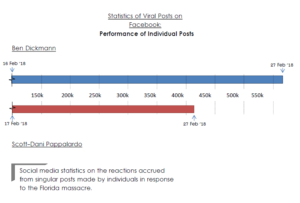
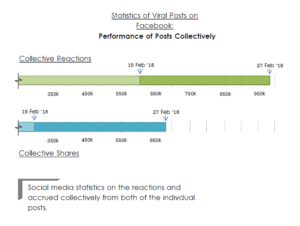
With the right message and timing, the movement has stimulated global conversation and waves of action engaging hundreds-of-thousands, if not millions.
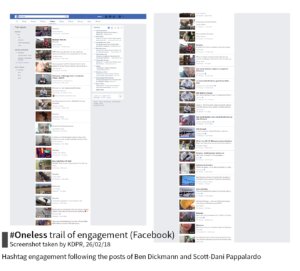
Of all this, the starkest realisation is that these waves of influence came not from those with the deepest pockets nor the most prominent in society, it came from high-school students and everyday citizens. It is a powerful display of how people can spur movements towards change with minimal resources and how social media assists in making it a reality.
This is a reminder to businesses to ensure social media is an important piece of their marketing pie. There is a world of interactions occurring in the online networking space be it Instagram, Facebook, snapchat, LinkedIn, Twitter or on the blogosphere. It is imperative these are assessed, positively engaged with and managed in order for your core business to thrive.
Words and graphics by Aidan Taylor
-
Kristin Devitt on ABC Radio
If you missed it, have a listen to KDPR’s Kristin Devitt on ABC radio’s hidden persuaders panel last night with Steve Austin.
Talking social media, Tourism Australia’s Super Bowl ad & will the dual citizenship saga ever end?



